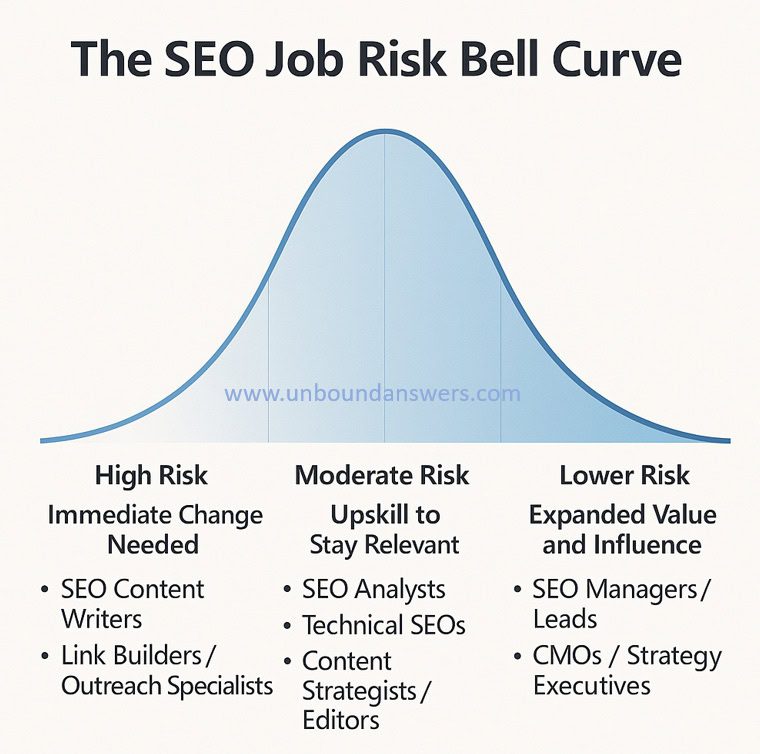The CMO Vs. CGO Dilemma: Why The Right Leader Is Critical For Success via @sejournal, @dannydenhard

Unless you have been living under a rock, you would have seen or experienced the evolution of marketing in recent years; often centered around the marketing leader and the chief marketing officer (CMO) role.
The CMO role has come under fire for performance, for the lack of big bang delivery, for not moving away from vanity metrics, and often being overly defensive at the leadership table.
Marketing Leadership Is Harder Than Ever
In coaching CMOs and equivalent titles, there are several recurring themes, one of which stands out in almost all coachees: Your job as a CMO is being a company executive first and then being a department leader.
You are in the C-Suite to represent the business needs, and business needs will trump your department and team needs, often going against how you are wired.
The business needs and the department needs shouldn’t be different. However, they are often at odds, especially when you, as the leader, haven’t placed the right guardrails; what often occurs is that you have followed poorly thought-through goals, key performance indicators (KPIs), and enabled disconnected objectives and key results (OKRs).
In other scenarios, the CMO role is being removed and not replaced, and the CMO title is removed. Repeatedly being replaced with VP, director, or “head of” titles, often resulting in the marketing leader not being in the C-Suite and regularly reporting one to two steps removed from the CEO.
Enter The Chief Growth Officer (CGO)
There are often reasons why there is a rebrand or title change within the C-Suite:
- It is deliberate, changing the internal comms of the role. It demonstrates that, as a business, you are moving from marketing to growth or from old to new.
- The removal of the previous CMO and legal requirements will dictate a change in title or a shift in job and description of the role.
- If you work at a startup, it is often evolving the narrative with investors, which often helps frame previous struggles and drives the message that you are concentrating on growth.
- There is also a showing of intent to the industry, often sending out press releases to show you are moving towards growth.
The Difference Between Marketing & Growth
The truth: The difference between marketing and growth setups is either negligible or a huge gulf.
Many confident marketing leaders would set up their teams in a very similar way; they would similarly set goals, but the department would work and operate in small ways.
The “Huge Gulf” Difference In Operating Includes:
- Removing siloed teams of specialists.
- Reducing and reframing the former way of defensive actions (Marketers have the hardest job and everyone thinks they can do marketing. Marketers have had to protect doing things that don’t scale and aren’t easily attributable).
- Moving from not being connected to a truly cross-functional department.
- Intentional reporting and proactively marketing more frequently and aggressively internally, which is the lost art in many marketing departments.
Like the best marketing organizations, the best growth departments are hyper-connected. They are intertwined cross-functionally, and they are pushing numbers constantly, reporting on the most important metrics and being able to tell the story of how it’s all connected. Reporting which KPI connects to which goal, how each goal connects up to the business objective, and how the brand brings performance.
Why The CGO Role Is Different
Skill Gaps
There are specific skill sets that differentiate successful CGOs from traditional CMOs – areas that often come up and stand apart marketing and growth. These include data fluency and the ability to crunch data themselves, adopting an experimentation-first mindset, being able to test, learn, and iterate as second nature, and everything CGOs do has revenue attribution baked in.
Customer Journey Ownership
Many CGOs are taking ownership of the entire customer lifecycle, and are happy to jump into product analysis and request missing product feature builds. There are many CMOs who struggle with the shift from leads and marketing qualified leads (MQLs) to customer lifetime values (CLVs).
Technology Integration
Often, CGOs have a greater understanding of tech stacks and the investment required in technical tools, and are more than comfortable working directly with product and engineering teams. Often the Achilles’ heel of CMOs.
Measurement Evolution
Growth leaders will often have sophisticated attribution models and real-time performance dashboards, focusing on performance across the board and being on top of numbers. Many CMOs can struggle with getting into the weeds of data and being able to talk confidently with the executive committee members.
External Stakeholder Management
CGOs will often have direct relationships with investors and board members, whereas “traditional CMOs” are regularly disconnected and have limited relationships with important management and investors.
Growth Department Challenges
In coaching CGOs, there are unique pressures that emerge in their sessions. The business requires its growth department to be accountable for every number and drive business performance through (almost all) marketing activities. No easy task.
The growth leader must evolve the former marketing approach into a fresh growth approach, which requires a new culture of performance, tactical refresh, a dedicated approach within teams in the department. That has to transform traditional disciplines following historical goals and tactics into the new growth approach. It’s no mean feat, especially in long-serving teams and traditional businesses.
The Long-Term Impact
Having built growth departments, holding both CMO and CGO titles, many long-term impacts are overlooked:
- Stagnating Careers: Many team members can see their career stagnate if they are not brought onto the growth journey, and can feel because of their discipline, they are not considered a performance channel.
- Specialist Struggles: In many marketing departments, there is a larger number of specialists and many specialists struggle with more integrated ways of working. It will be important for specialists to attempt to learn other skills and appreciate their generalist colleagues who will rely on them. Specialists are often those impacted most by the “marketing to growth” move.
- Generalist Growth: Generalists are a crucial part of the move towards growth, often being relied upon to act as the glue and as the bridge. Generalists will need to understand the plan and connect with their specialist department colleagues, and help to shape and reshape.
- Team Members Lost In The Transition: In any changeover, there will be team members who get lost. They will report to or through new managers, and will drift or will feel lost, and their performance will be hit. It is critical that all team members understand their plan and feel they are brought on the journey. Many middle managers are actually lost first. Ensure you keep checking in and have a plan co-created with the department lead.
- Minding The Gap: The gap between teams can grow, and many teams can struggle to adapt to the change quickly enough. This also occurs when performance-based CGOs can overlook brand and retention teams.
- Cultural Issues: Humans are averse to change. Now, opting out is the default, not opting in. It is on the team leads and the department head to bring everyone on the journey and make the hard decisions when members will not opt in.
The Path Forward: Lead Your Marketing Leadership Evolution
The shift from CMO to CGO isn’t just about changing titles or acting differently; it’s about fundamentally reimagining how marketing drives business growth.
For marketing leaders reading this, the question isn’t whether this evolution will happen, but how quickly you can adapt to lead the charge for departmental and business success.
Something I share in coaching is, if you’re a current CMO (or equivalent), you should step back and ask yourself the following questions:
- Are you already operating as a “CGO”?
- Are you deeply embedded in revenue conversations?
- Are you able to connect and drive cross-functional alignment and drive change?
- Do you positively obsess over business metrics that matter beyond your department?
If the answer is yes, you’re already on the right path. If not, it’s time to evolve before the decision is made above you or for you.
If this fills you with dread, then I can only be direct: You will have to learn to change your approach or get used to feeling the heat of business evolution.
For organizations considering this transition, remember that the best CGOs don’t just inherit marketing teams; they proactively transform them.
They build a culture where every team member understands their direct impact on business growth, where specialists learn to think and operate as generalists, and where the entire department becomes a revenue-generating engine rather than being considered a cost center.
Smart marketing leaders can also lead this transformation, but being able to prove they can evolve themselves and the people around them to this new way of working is critically important. A word to wise: Do not put yourself forward without knowing you are will be an essential leader in this new operating model and when it struggles you will be the leader they look to get the new system back on track.
The companies that get this transition right will see marketing finally claim its rightful seat (back) at the strategic table.
Those that don’t risk relegating their marketing function to tactical execution will see many of their competitors pull ahead with integrated growth strategies.
The choice now is yours: Evolve your marketing leadership to meet the demands of modern business, or watch as your competitors rewrite the rules of growth, while you’re struggling with metrics and influencing your business cross-functionally.
The future belongs to leaders who can bridge the gap between marketing’s art and growth’s science. The title will change and revert, but the question is: Will you be one of the modern marketing leaders, or could you be left behind?
More Resources:
Featured Image: Anton Vierietin/Shutterstock







